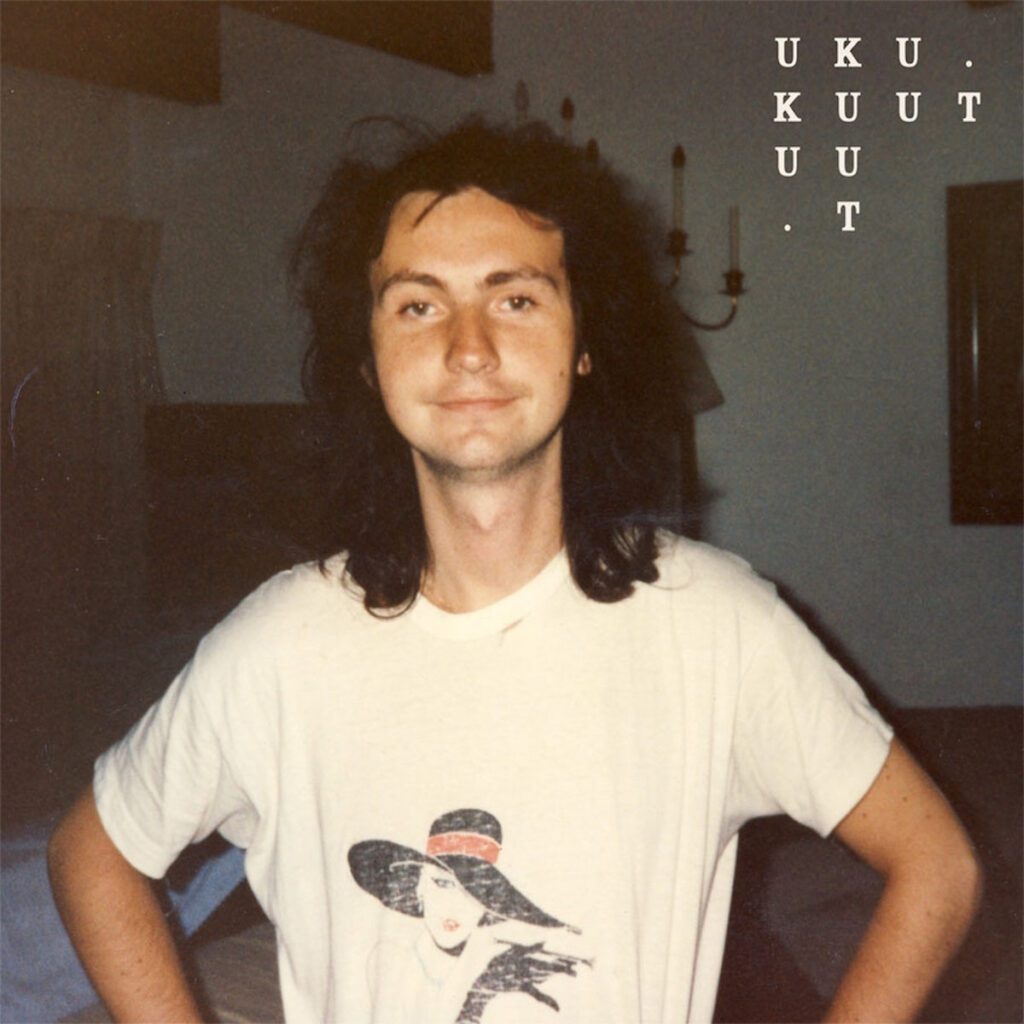
One minute you're listening to French avant pop artist Karl Biscuit's song “Hiérophone.” Next, you're taking notes from painter Giorgio de Chirico in a grumpy documentary interview.
Nestled casually among this material is the discography of Uku Kuut and his album Vision of Estonia.
When someone first puts the album on, a common reaction is that it sounds “retro.” As Peoples Potential Unlimited (who released the album on Bandcamp) confirm, the songs were “written and recorded at UKU's home studio in Los Angeles and Stockholm between 1982 & 1989, including tracks co-written with Maryn E. Coote [AKA Marju Kuut, his mother and frequent collaborator, who had her own successful music career]…”
Indeed, the instrumentation, chords, and melodic decisions that make up this album were most celebrated and accepted at the time they were recorded.
Vision of Estonia‘s first track, a demo, is founded on a repeating, ethereal synthesizer and scattered electronic drums. The non-demo version of “Vision of Estonia” refines things with a honey-sweet flute part played by Marju Kuut.
“Real Love” locks in with gated reverb snare (the “80s drum sound”). “Mayday” features keyboard horn section blips. “I Ask U Now” is probably the most laissez-faire track, moving through inquisitive computerized woodwinds, church bells, and a vocoder effect. And to drive the album off into the sunset is the slapping and popping bass line of “Right Or Wrong.”
One might laugh and call it “elevator music.” Or soften the blow by classifying it as “adult contemporary.” However, there's an unwavering bunch who stand by this style of music here and now. Kuut's record is an object of adoration for fans from Ireland to Japan. Two viable reasons come to mind.
Firstly, the auditory space of this style of music encourages inner quiet and observation. Put on some headphones, listen while you go for an evening stroll, and you'll see it happen.
Musically, instead of a hook, Kuut's songs focus on moods and overall impressions. In this album's case, it was the mood of Estonia. When musically envisioning Estonia, zithers, accordions, and choirs are more typical choices of instrumentation. But isn't that intellectually limiting?
In any case, we know Kuut's compositions were supercharged by America's west coast, and that place's mood would appear to have impacted his compositions. As music blogger Jen Monroe writes on her site Listen To This, Kuut's album Santa Monica is “a showcase of Kuut’s brilliant breed of quirky and atmospheric electronic jazz-funk. Given his propensity for generating work in response to locations, it also feels like a moving tribute to a city in which he lived for many years (while also including a few nods to Estonia and Sweden [another country he resided in]).”
Secondly, for many people born between 1981 and 1996, this music activates at least some kernel of deep-rooted nostalgia. Visions of malls, grainy infomercials, zany cartoons, toys, swimming pools, Walkmans, and getting up to no good with friends outside. Sure, it depends on where you're from and what was available to you, but these sounds connect to youthful, optimistic multi-sensory memories. Times when one had the chance to just “be.” For many in the west, this optimism was occluded by the fear that came right after 9/11.
And though he was committed for a long time to his own sound and compositions, Uku Kuut tragically passed away in 2017, after a long battle with ALS.
But the optimism of his music is still there to be held, and a similar optimism is found in several other artists' songs in fact.
It's central to Jan Hammer's electric soundtrack for Beyond the Mind's Eye. You can find it in Marcos Valle's eponymous 1983 album. It's in Al Jarreau's record Breakin' Away. It defines the Japanese City Pop genre, as heard in Tatsuro Yamashita's album For You and as seen in the album art of painter Hiroshi Nagai.
The vision of musicians like Kuut continues today in the work of new artists, at times classified as “ambient” or “synthpop.” Other times, the music is rendered a meme on the “Vaporwave” scene, accompanied by images of Roman sculptures, computer glitch art, and palm trees. But don't let that distract from the music.
It's sleek. It's fun. It's upbeat. At times, it's mysterious. And it's a sincere relief. Enjoy it.



